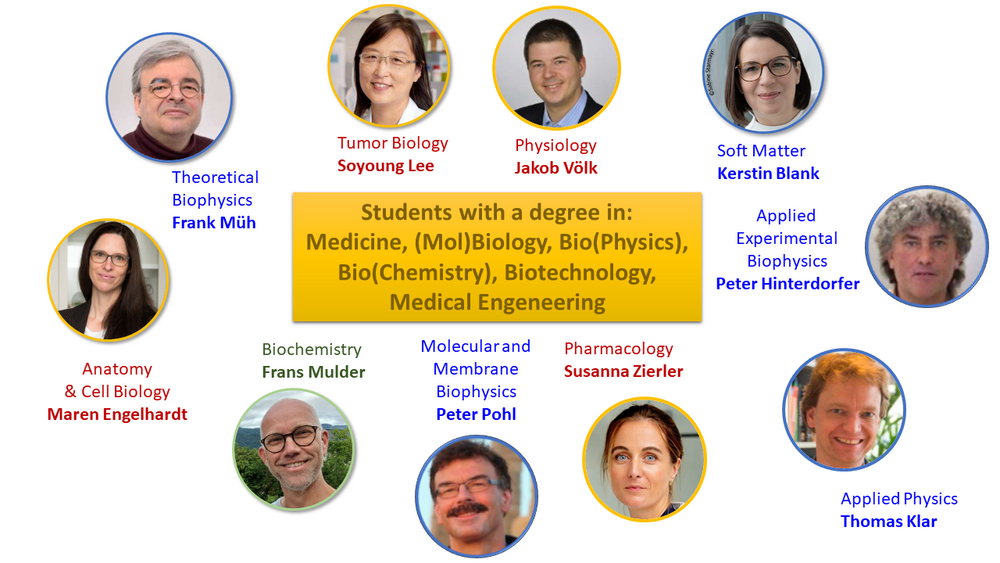The joint doctoral school Molecular Transport and Recognition at the Faculty of Engineering and Natural Sciences and the Faculty of Medicine of Johannes Kepler University Linz (JKU) will launch on 1 September 2025 under the coordination of Prof. Peter Pohl. Funded by the Austrian Science Fund (FWF), the school brings together leading researchers in biophysics, chemistry, physics, and medicine to explore the molecular mechanisms that drive life.
How do molecules cross membranes? How do cells communicate? And how do these processes change in disease and aging? The program aims to train a new generation of scientists to address these fundamental questions at the interface of physics, biology, and medicine.
Ideal applicants hold, or are close to completing, an MSc in biophysics, physics, biochemistry, biomedical sciences, pharmacy, biology, chemistry, bioinformatics, biomedical engineering, chemical engineering, or a related discipline. Strong academic achievement, independent and analytical thinking, communication and teamwork skills, and proficiency in English are essential.
Call for PhD researchers. , öffnet eine externe URL in einem neuen Fenster

Consortium
| Kerstin Blank | |
| Frank Müh | |
| Frans Mulder | |
| Maren Engelhardt | |
| Soyoung Lee | |
| Peter Hinterdorfer | |
| Peter Pohl | |
| Thomas Klar | |
| Jakob Völk | |
| Susanna Zierler |
10 Fully Funded PhD Positions in Molecular Transport and Molecular Recognition
- Synaptopodin-associated gap junctions in ion dynamics at the AIS, öffnet eine externe URL in einem neuen Fenster – Engelhardt
This project investigates the role of synaptopodin at the axon initial segment and its potential link to electrical and ion-based coupling via gap junctions. - Structure and interaction of the intrinsically disordered protein synaptopodin, öffnet eine externe URL in einem neuen Fenster – Mulder
The project aims to characterize the structural ensembles and binding interactions of synaptopodin to better understand its functional mechanisms. - Two-pore channels regulate organellar ion homeostasis and anaphylaxis, öffnet eine externe URL in einem neuen Fenster – Zierler
The project explores the physiological and structural role of two-pore channels in endolysosomes, with implications for anaphylaxis and organelle ion regulation. - Water flux through narrow membrane channels, öffnet eine externe URL in einem neuen Fenster – Pohl
This project investigates water permeability and coupling to ion movement through narrow channels, particularly aquaporins, using electrophysiology and advanced spectroscopy. - Structure-based simulations of aquaporins and other channel proteins, öffnet eine externe URL in einem neuen Fenster – Müh
The project uses molecular dynamics simulations to study how aquaporins and other channels regulate water and ion transport. - Nanocontainer, öffnet eine externe URL in einem neuen Fenster – Klar
This project develops optically addressable nanocontainers for the targeted release of calcium ions within cells to investigate signaling processes. - Nano-scale cellular structural dynamics and mechanics during senescence and calcification, öffnet eine externe URL in einem neuen Fenster – Hinterdorfer
The project uses high-resolution atomic force microscopy to study structural and mechanical changes in membranes during cell senescence and calcification. - Mechanics at focal adhesions – towards mechanodiagnostics and -therapeutics, öffnet eine externe URL in einem neuen Fenster – Blank
This project examines how physical forces and local membrane properties at focal adhesions influence cellular signaling and responses to mechanical stimuli. - Physical property of plasma membrane and ion channel activity during senescence of cancer cells, öffnet eine externe URL in einem neuen Fenster – Lee
The project studies how changes in membrane fluidity and lipid composition affect ion channel function and calcium signaling in aging cancer cells. - Membrane phosphate transport mechanisms in vascular calcification, öffnet eine externe URL in einem neuen Fenster – Völkl
This project investigates how plasma membrane transporters regulate phosphate and calcium homeostasis in vascular smooth muscle cells and their role in calcification.
 Zur JKU Startseite
Zur JKU Startseite



